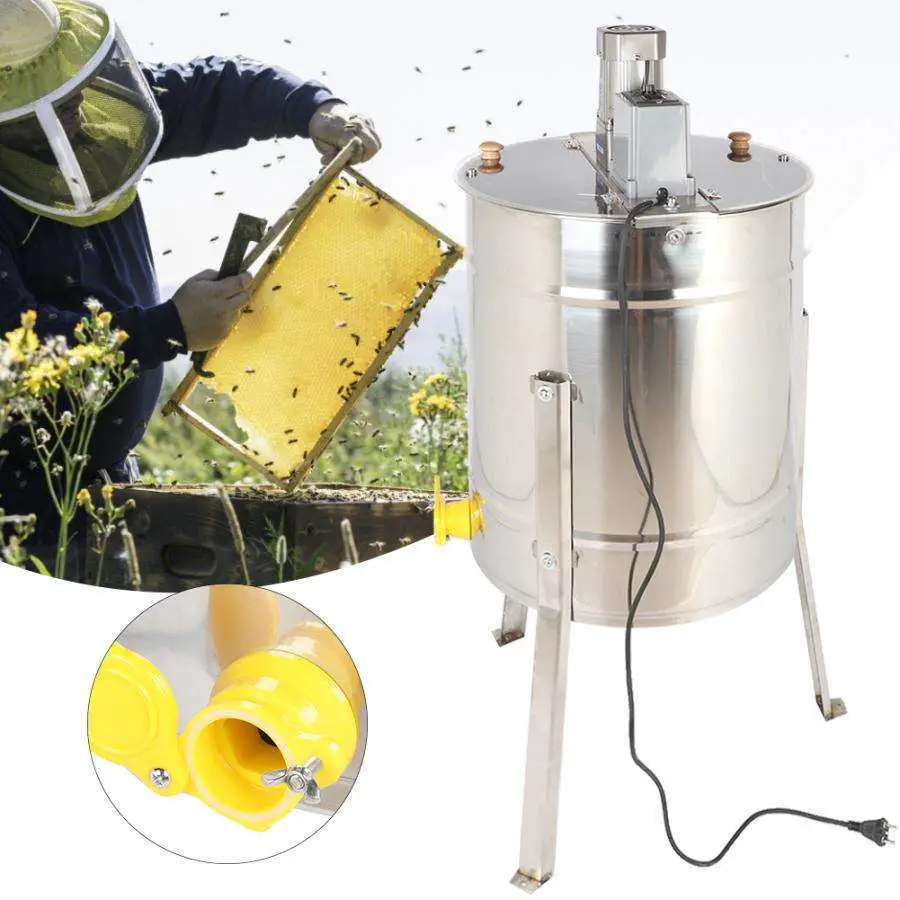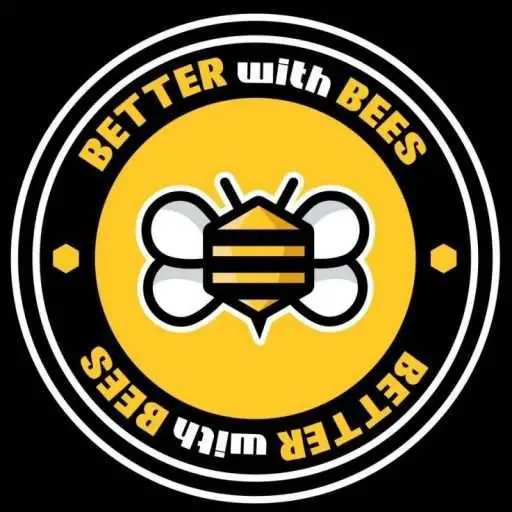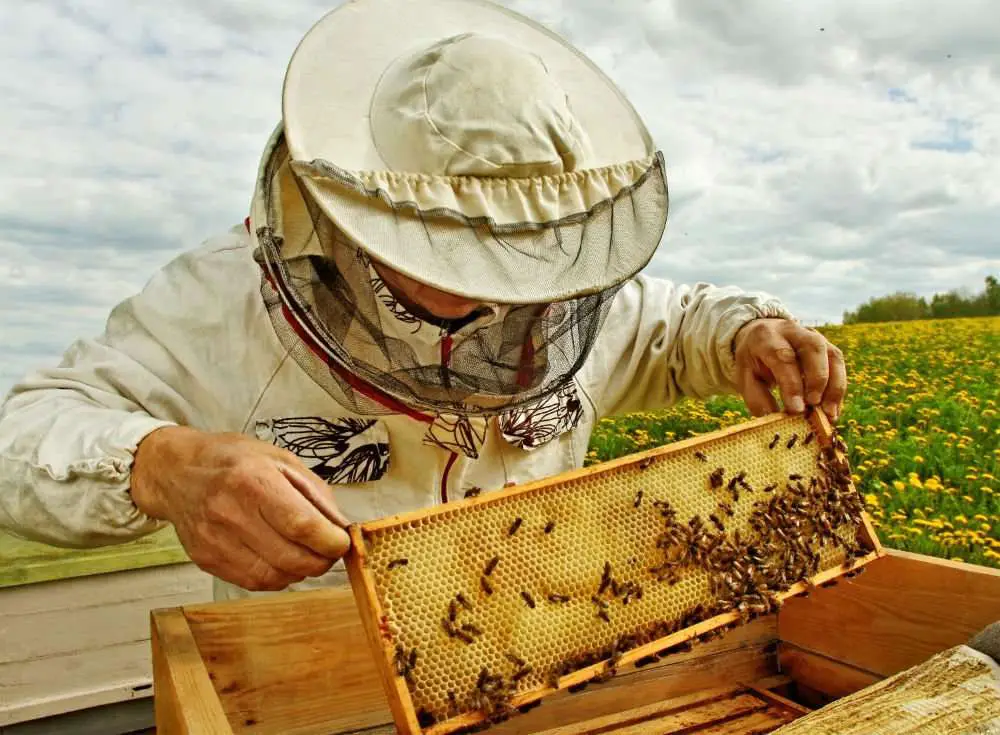Harvesting honey without an extractor doesn’t have to be an expensive task, although honey extractors are often mentioned in the beekeeping world, there are cheaper alternative methods that are perfect for beginner beekeepers and they will also help to keep your budget intact for other important tools and equipment.
For those who are unaware of honey extractors and their costs, we’ll give you a quick rundown of how they work and then we’ll talk through the cheaper methods that are available, showing you that you don’t always need fancy gadgets to produce the tasty honey we all know and love!
What Are Honey Extractors
Honey extractors are basically big steel drums that are built to hold the frames from your hives in specially designed sleeves. The drums are connected to a power source which allows them to spin, the action of the spinning drum then forces the honey out of the frames.
The honey drips down the inside of the drum and collects in the bottom, where a spigot can be opened to drain the honey into a bucket or other suitable storage containers. These automatic honey extractors are effective but they come at a cost, you will be looking at paying at least $100 upwards and don’t forget that they require extra storage space.
If you are someone with multiple hives and dealing with large amounts of honey, then this would be a sensible purchase, but for the beginners and beekeepers dealing with smaller amounts of honey, there is another way, a cheaper way, that gives you the same results.
Extracting honey without an extractor does take longer but being more hands-on in the process is very rewarding at the end!
The aim of the game is to get all of your honey out of the wax honeycombs, and there are various methods that will give you different types of honey products.
Crush and Strain or Chunky Honey Method?
The crush and straining method will give you the filtered honey that we all know and love, the chunky honey method is simply adding chunks of honeycomb to the filtered honey for a mixed texture, and using the cut comb method will leave you with blocks of honey (a popular choice nowadays).
We’ve explained each of these methods in more detail and included the tools required for each one, try them all, it’s good fun and great experience!

Crush and Strain Method
Tools Required
- Bowl for crushing the honeycomb
- Bucket for collecting the honey
- Filters (wire strainers or cheesecloth are useful)
- Uncapping knife for cutting or scraping
Firstly, you need to cut the comb from the frame with your uncapping knife (ideally hot for an easier process) and then place it all within your bowl. If you are using plastic foundations then you’ll have to scrape the honey off from each side.
Crushing the comb is next, we find that kitchen tools like a spatula or potato masher work well. Crush the comb down with your chosen tool until there are no lumps, remember that each wax cell contains honey, so this might take a while depending on how much comb you have in the bowl and how much stamina you have when crushing!
Next, the straining stage, take your cheesecloth or whatever you have chosen to strain your honey. You can buy honey strainers that have been specifically built for the job, they are sturdy and make the process a lot easier.
Place and secure the strainer over your bucket and place your crushed comb on top, we recommend leaving the bucket in a warm location (not hot as the wax will melt!) and let gravity do its thing, the honey will drain quicker in a warmer location. Also, make sure to cover the comb with a cloth to keep dust and other unwanted nasties from getting to your precious honey.
Finally, you should be left with your filtered honey at the bottom of the bucket, and be sure to let all of it drain through because you don’t want to be wasting any. Depending on how well the honey has drained, you might want to repeat the process to achieve the right consistency of honey that you are looking for. It all comes with practice and you will eventually find the right process that works best for you,
Chunky Honey Method
A quick and easy alternative to the crush and strain method is to simply add chunks of comb to the jar. Use your knife to cut a few pieces of comb off before you crush and strain, as in the method explained above, then add the chunks to an empty jar.
Simply add the filtered honey to the jar when you are you finished with the draining process. It’s a unique looking product and it’s proving to be popular amongst honey lovers, so be sure to give it a try, even if it’s just for your personal enjoyment!
Cut Comb Method
Tools Required:
- A sharp knife to cut the comb
- A cooling rack to place the block
- Tray or baking sheet to catch the excess honey drips
The cut comb method is an easy way to prepare your honey, giving it a raw and natural finish that looks cool and is very popular amongst beekeepers and honey consumers!
Firstly, you need to lay your tray or baking sheet down and then the cooling rack on top of that. Next, take your frame full of honey and lay it over the cooling rack.
Now all you need to do is take your sharp knife (again, heating the knife up makes the process easier) and slice the honeycomb up into blocks, 3”-5” squares are common sizes. Lift the frame away and then slightly separate the blocks and leave for a couple of hours.
The tray or baking sheet will catch any of the honey drips so you don’t need to worry about waste, leaving you with several cut comb blocks and some leftover honey as a bonus!
The one important factor to point out with the cut comb method is that it’s not possible to carry out if you are using plastic foundations, you’ll need to be using wax foundations or, better still, let your bees build the foundations themselves for a fully natural process!
Is Extracting Honey Manually Worth it?
So there you go, three easy methods that show you how to extract honey without an extractor, giving you different end results that are sure to delight you and your customers.
Most of the tools can be found in and around your house which is going to save you plenty of money in the process. If you were to buy anything then an electric uncapping knife would be a useful option because they make cutting or scraping the honeycomb so much easier.
Overall, I hope we’ve made it clear to you that you really don’t need to go out and spend your hard-earned money on a fancy honey extractor, for now anyway.
If your budget allows it, then great, but you can still produce tasty, filtered honey and cut comb blocks with some good, old-fashioned, hands-on work! We recommend that you wait until you really need an automatic extractor, the manual method is perfect for beginners and those dealing with small amounts of honey.
Harvesting honey without an extractor is about finding the right balance between time and money, once you start increasing your number of hives then you will definitely know it’s time to upgrade to the automatic methods!

